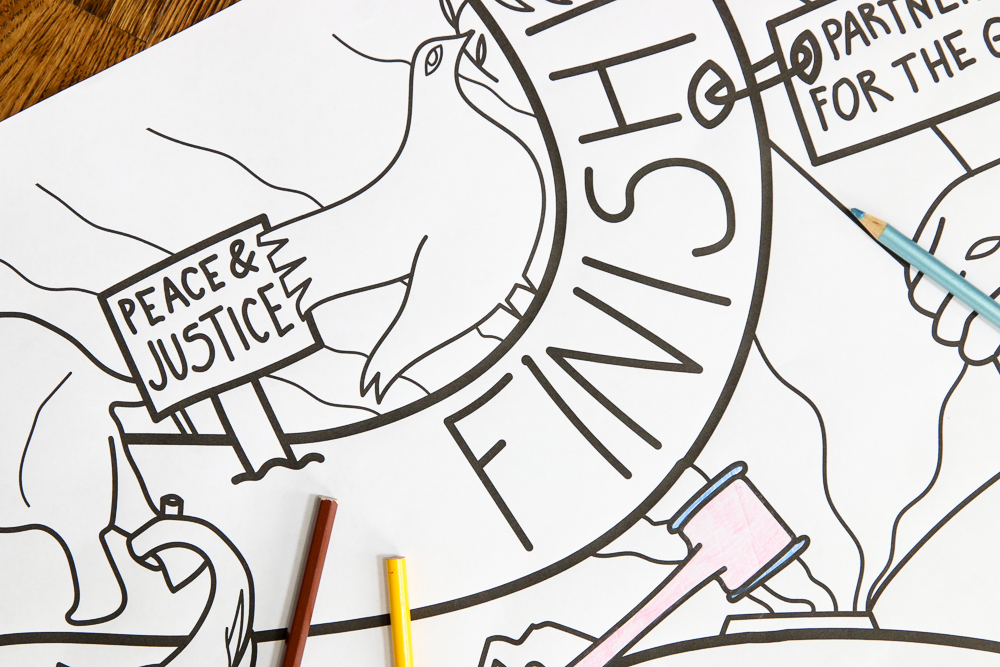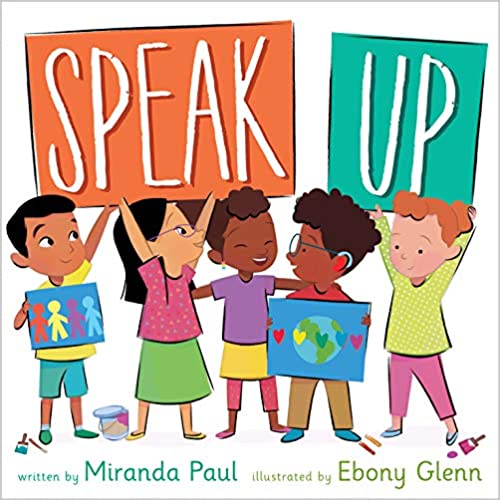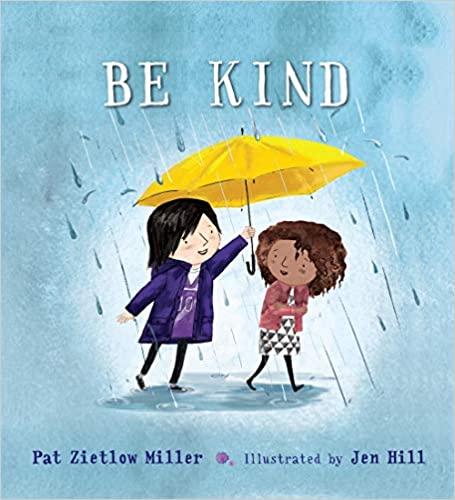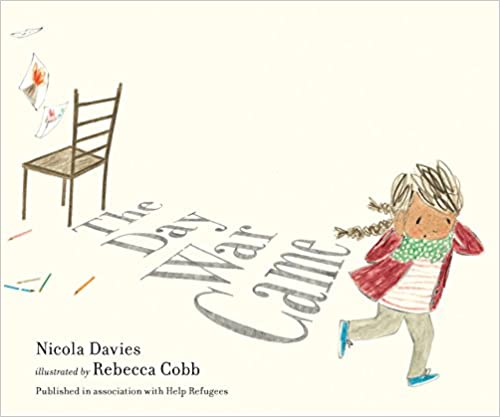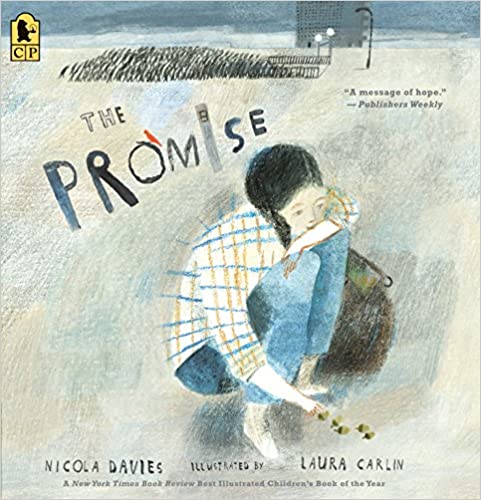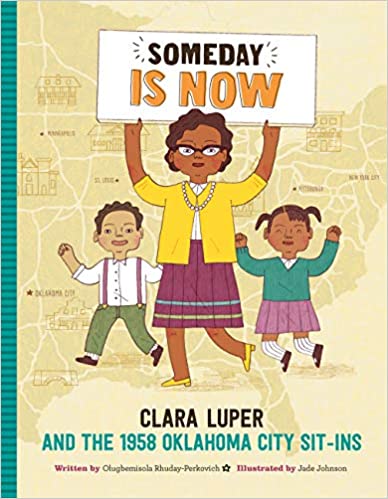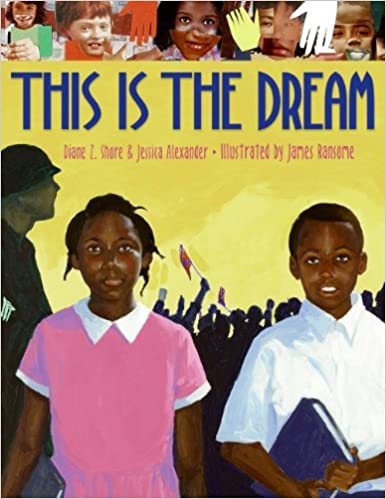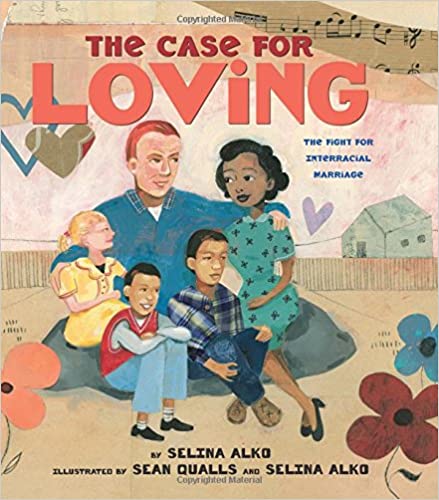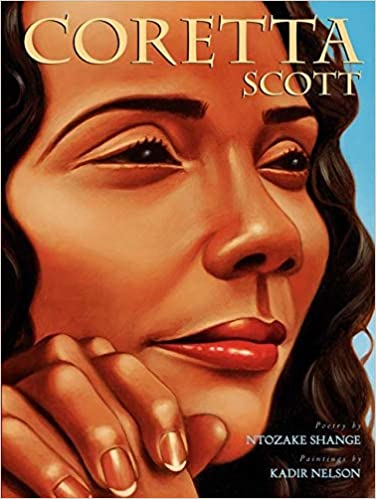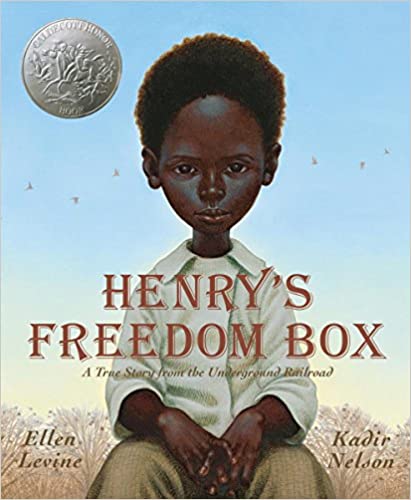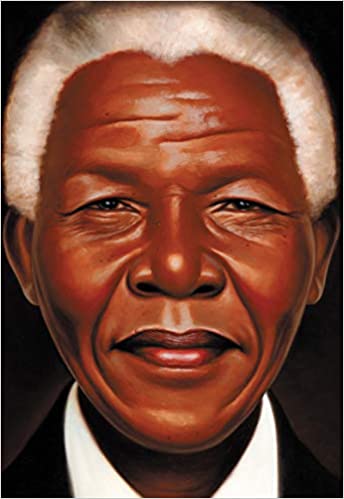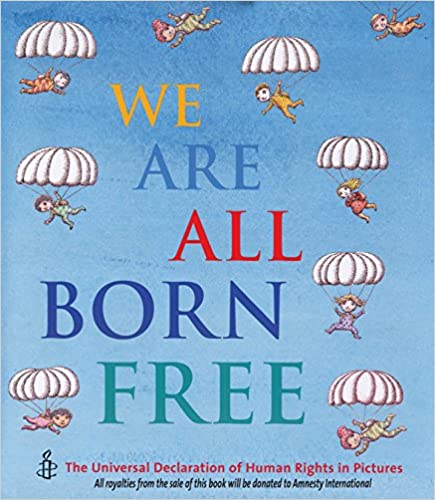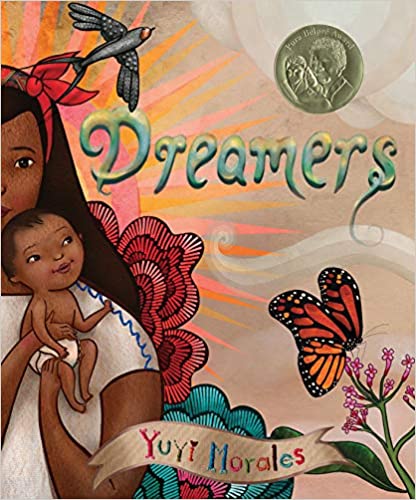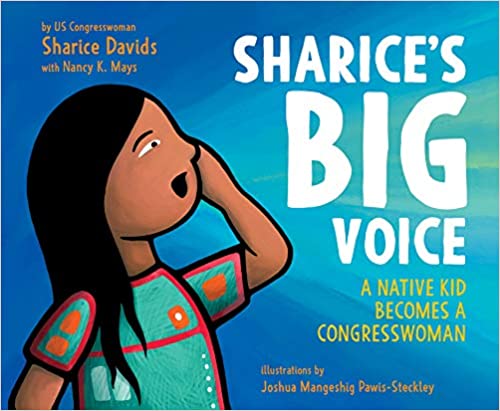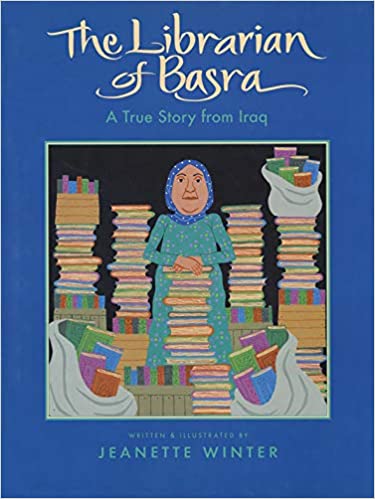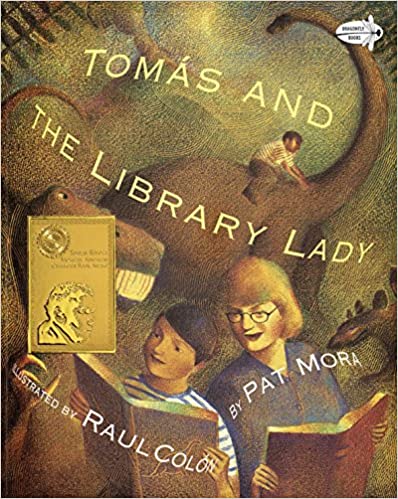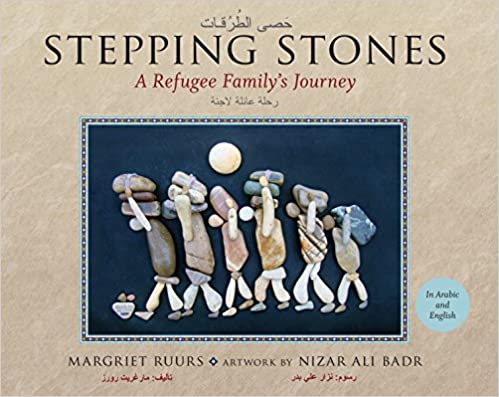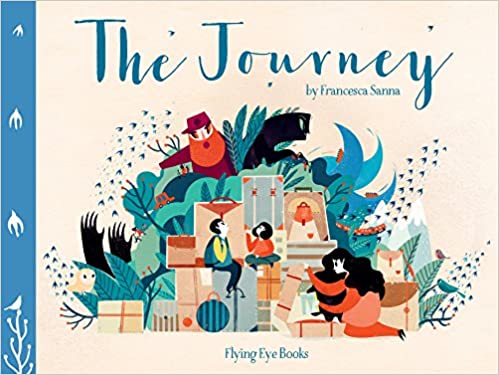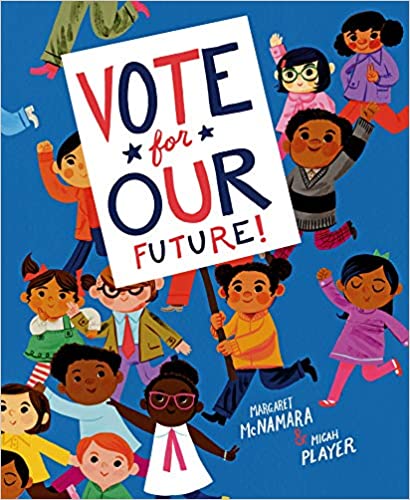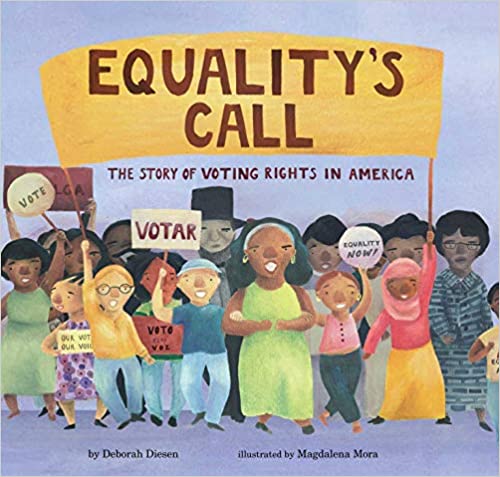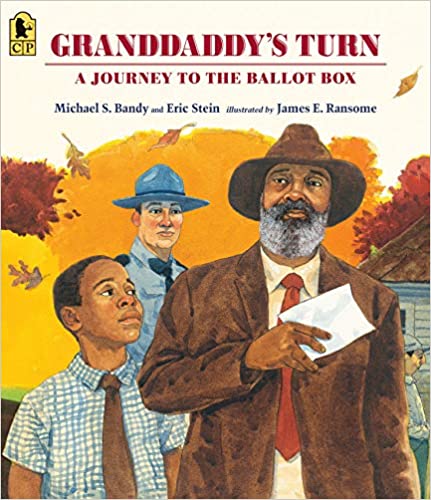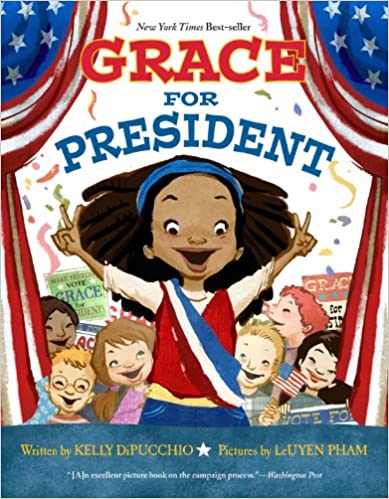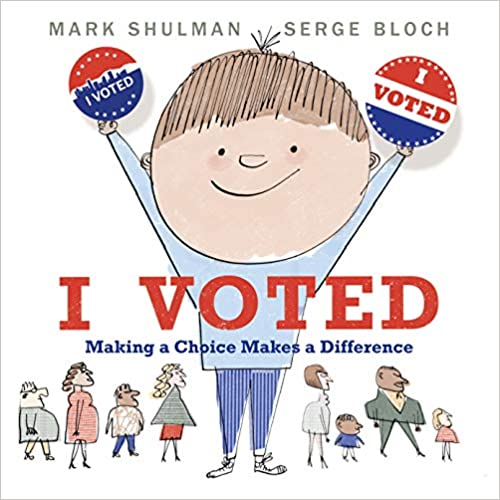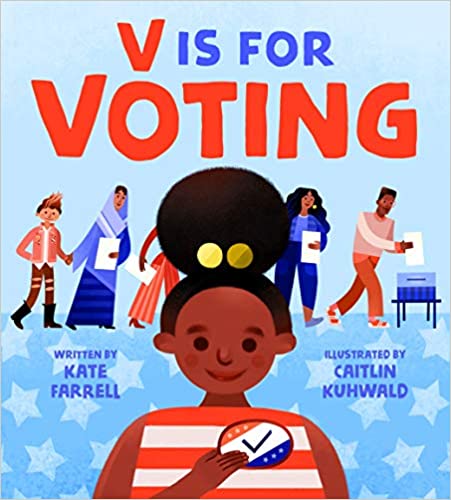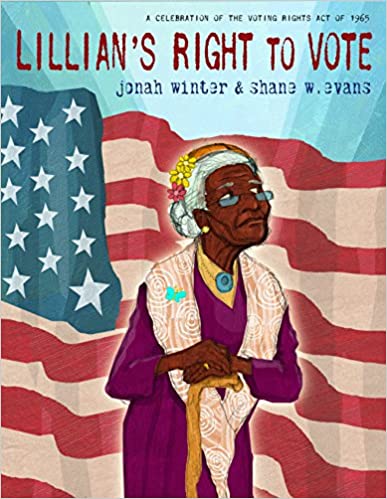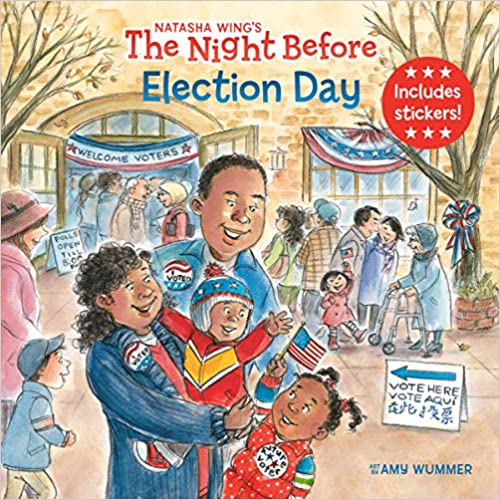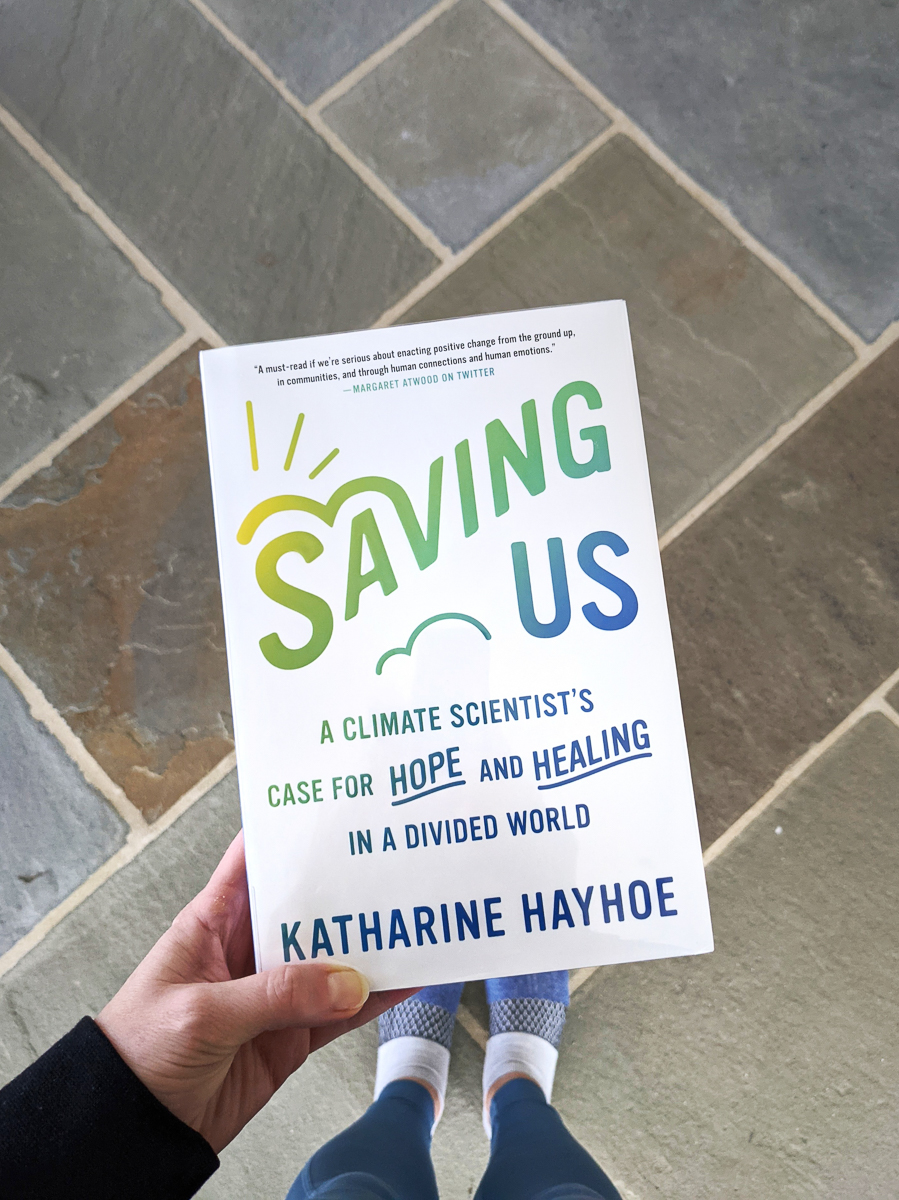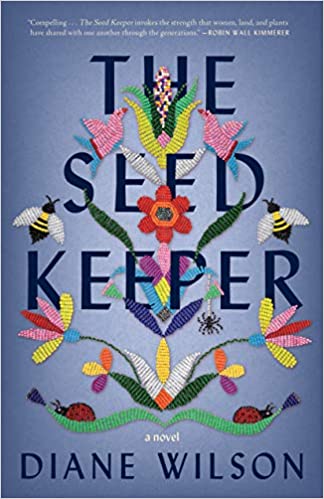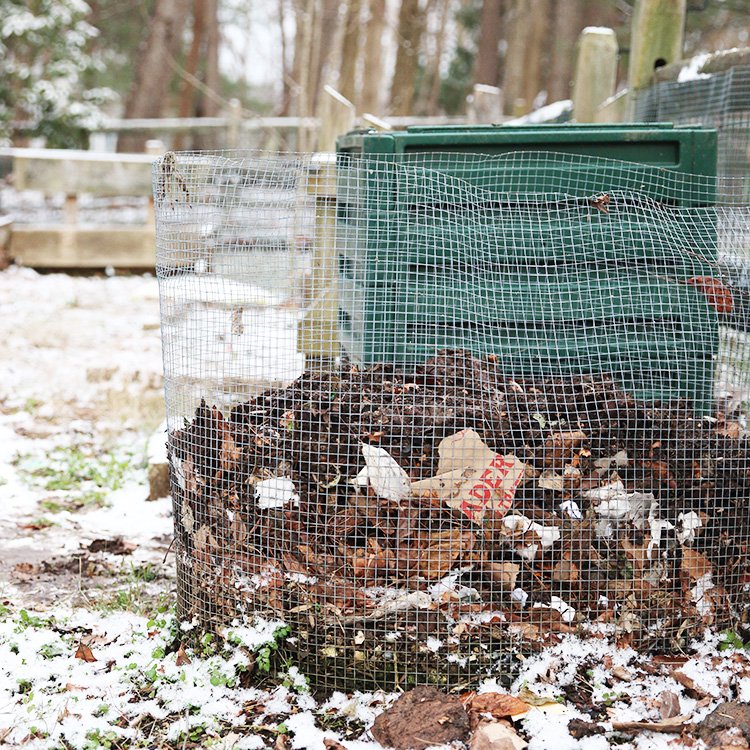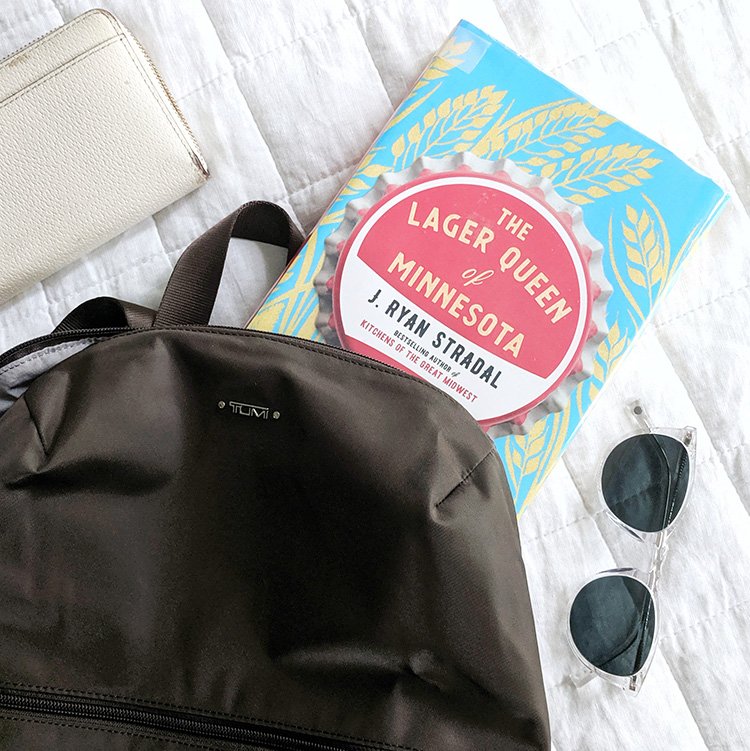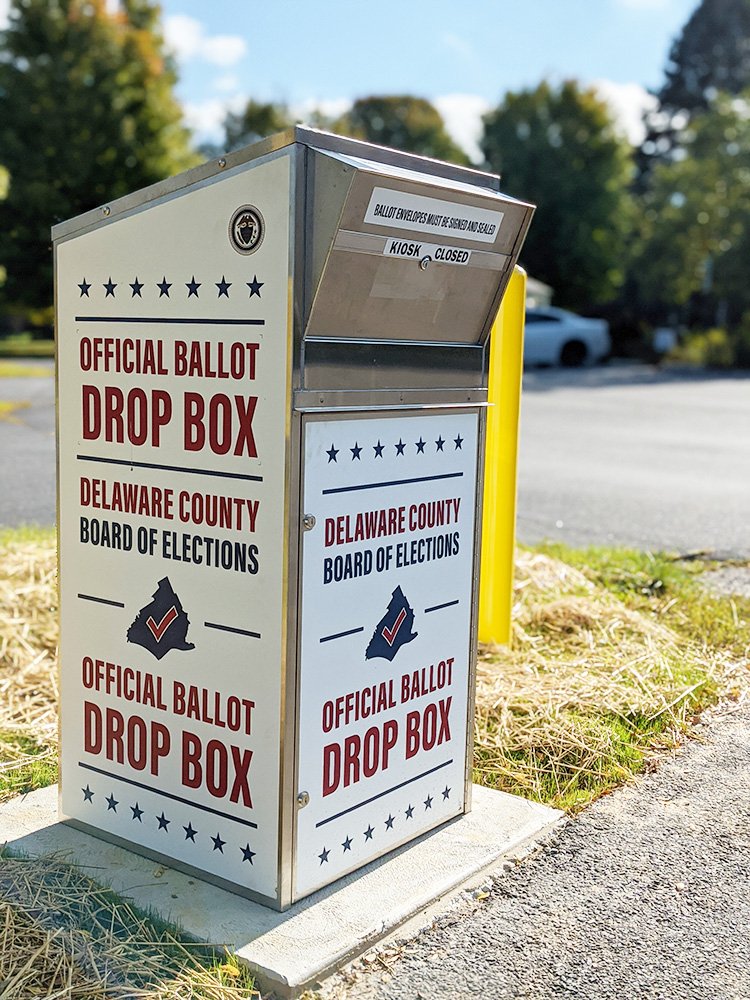Peace, Justice, and Strong Institutions | United Nations Sustainable Development Goal #16
Picture books are a great entry point to many difficult conversations with our kids. Read on for more about this creative project to help kids connect with and understand the global social and environmental justice goals as defined by the United Nations Sustainable Development Goals in an age-appropriate way.
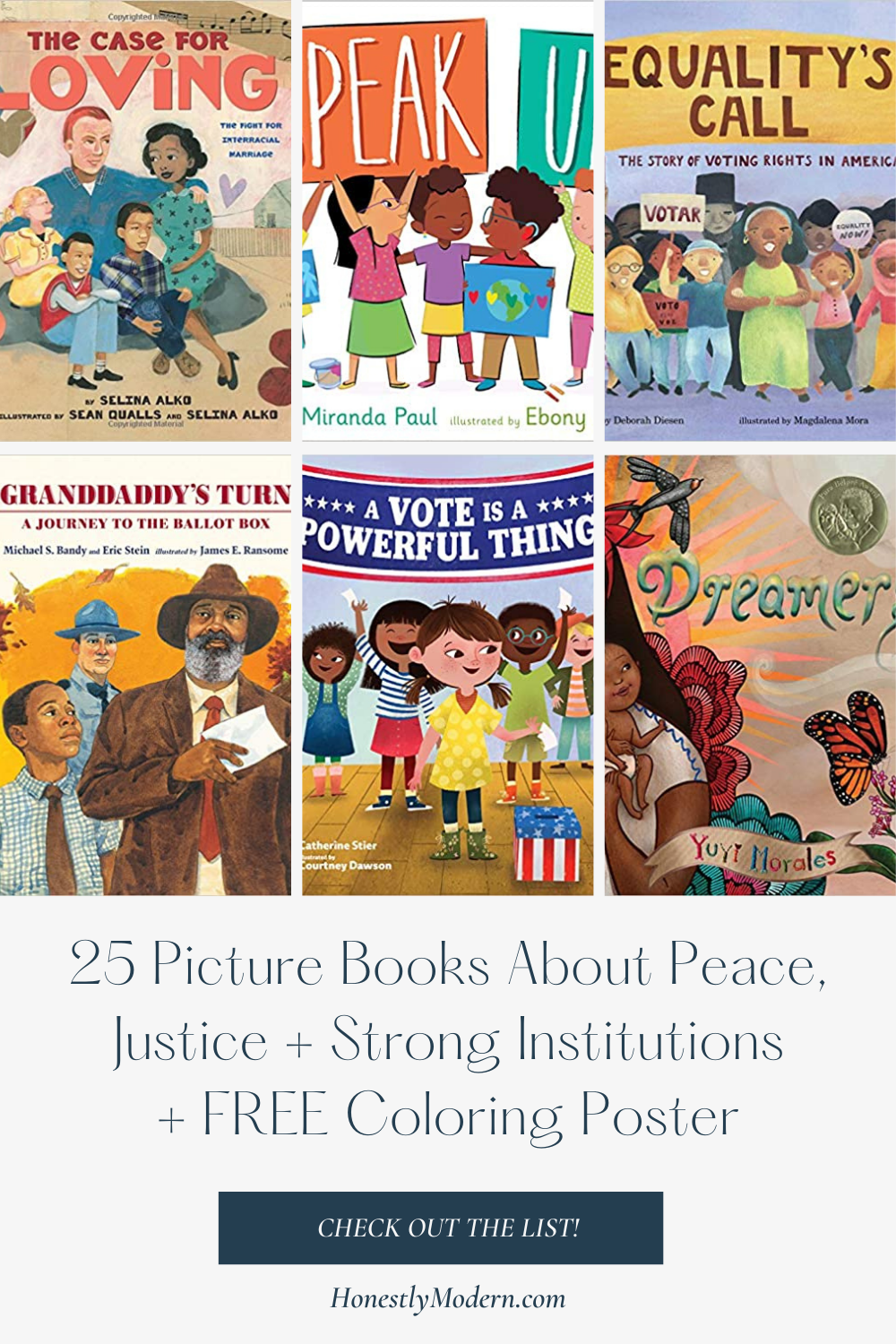
This picture book list is part of a series of picture book lists that align with the United Nations Sustainable Development Goals. We’ve created a picture book list for each of the 17 United Nations Sustainable Development Goals as well as a FREE coloring poster to track progress and explore the United Nations Sustainable Development Goals with kids.
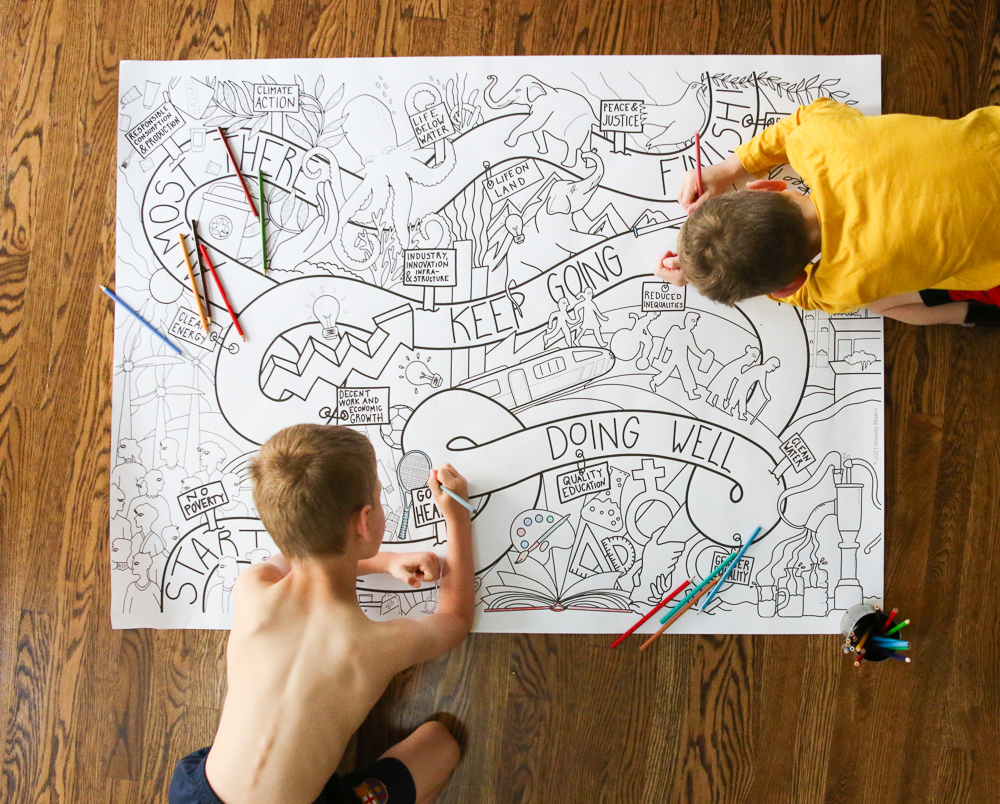
Learn More & Download The Free Coloring Poster
To learn more about the FREE coloring poster and see all 17 picture book lists, head to the United Nations Sustainable Development Goals Coloring Poster and Picture Book List homepage. Alternatively, simply sign up for our email list below and receive a link to download the FREE coloring poster.
What Are The United Nations Sustainable Development Goals?
In 2015, the United Nations adopted 17 Sustainable Development Goals (SDGs), a collective framework for peace and prosperity for people and the planet, now and into the future. The Sustainable Development Goals have broad intentions to end poverty and other deprivations while recognizing the need to simultaneously improve health and education, reduce inequality, spur economic growth, and tackle climate change.
Peace, Justice, and Strong Institutions | United Nations Sustainable Development Goal #16
The sixteenth United Nations SDG strives to promote peaceful and inclusive societies for sustainable development, provide access to justice for all, and build effective, accountable and inclusive institutions at all levels. Through this lens, the organization hopes to promote better access to things like the Democratic process in politics, cultures, and societies that are accepting of those who are different from themselves, and institutions that reflect and support these values.
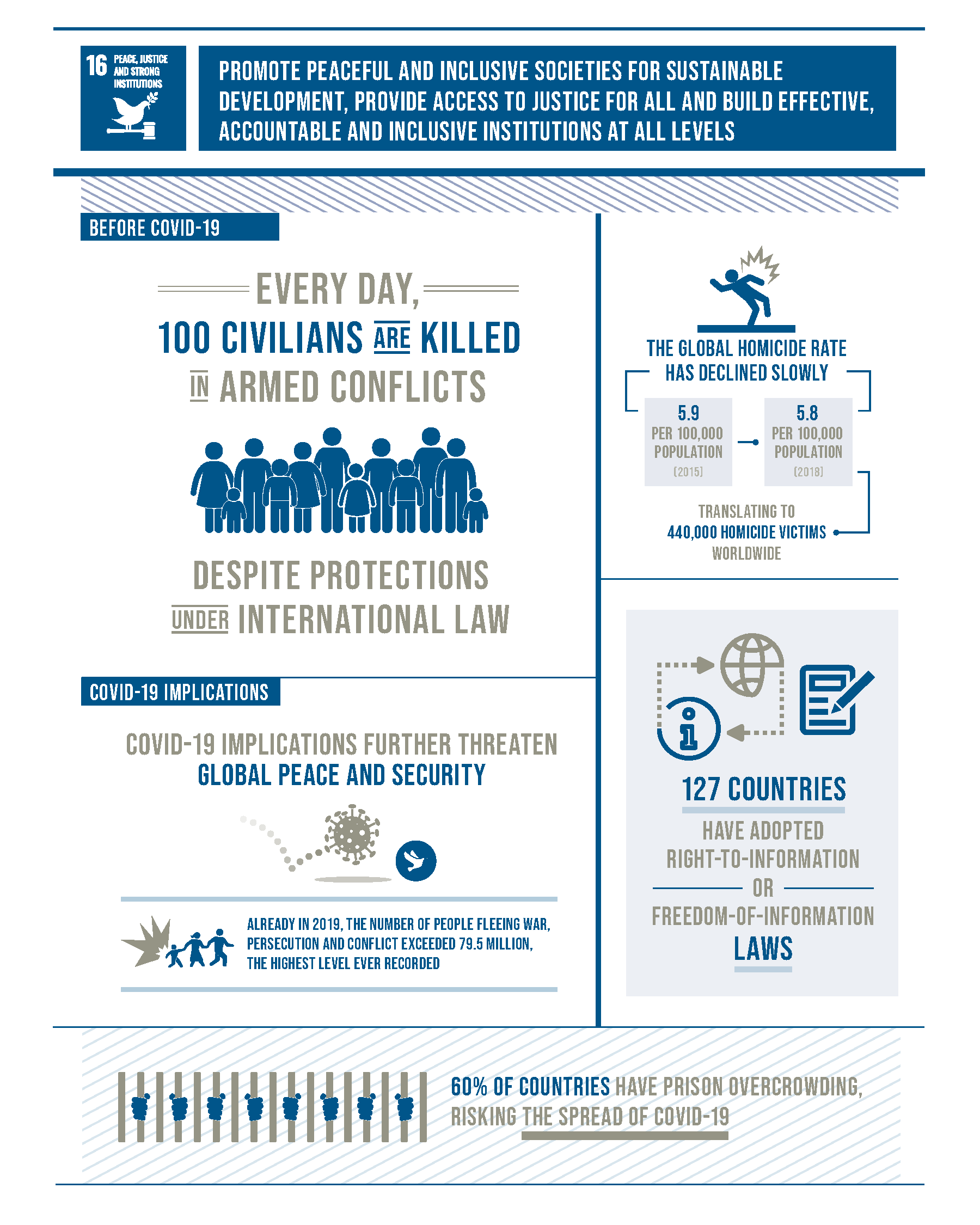
A Note on Buying and Borrowing Books
We include affiliate links to books we recommend. If you purchase through one of these links, Honestly Modern earns a very small commission that has no impact on your purchase price.
If you can find the books from your local library, from a friend, at an independent bookstore, or through a used book shop, those sources are ideal. Using the library is zero waste, saves money, and saves space in your home because you can read all the books without storing all the books on your bookshelves. If you’re not sure of the best way to use your local library, check out these tips to make the most of your local library. With a little exposure, your kids will learn to LOVE the library!
If you prefer to listen to audiobooks, we recommend using Libro.fm, our favorite audiobook app. We’ve tried several audiobook apps and love that Libro.fm supports independent bookstores and offers a great user experience.
Picture Books About Peace, Justice, and Strong Institutions
The following picture books about peace, justice, and strong institutions highlight the benefits of these values and organizations as well as the consequences we may experience when these things are not in place or not functioning properly.
Picture Books About Advocating For Others’ Equality & Justice
Speak Up by Miranda Paul
In rhyming prose and with diverse, colorful illustrations, the story takes children through a variety of situations where they should speak up for themselves, others, and what is right. Whether they witness someone being mean, unfair policy, disregard for nature, or a rumor being spread that they know is not true, they should speak up to stand for justice, kindness, and compassion.
Ages 4 – 7 yrs | Pages 40
Be Kind by Pat Zietlow Miller
One little girl in class spills grape juice all over her dress and all of her classmates laugh and make her feel embarrassed … except for one. The one little girl who doesn’t laugh remembers that her mom always told her how important it is to be kind, but she conveys through the story that she’s not really sure what that means. She explores different and simple ways that children can be kind to others.
It’s such a great story and a reflection of a challenge about kindness (and what it actually means in practice) that many of us don’t explicitly teach our children. This book includes a diverse cast of characters and discusses sharing our kindness around the world. I included it here because I think it’s a foundational topic for our children to consider as they think more holistically about why each of us needs to play a role in creating fair and just societies for everyone.
Ages 3 – 6 yrs | Pages 32
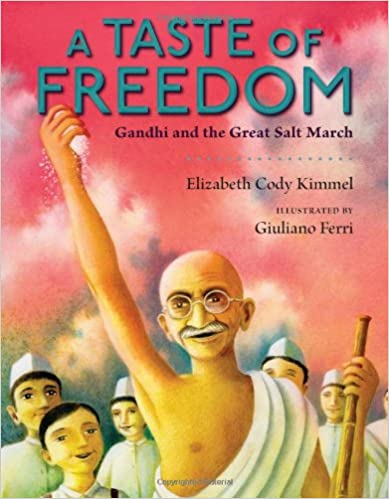
A Taste of Freedom: Gandhi and the Great Salt March by Elizabeth Cody Kimmel
A little boy shares his experience living and participating in the Great Salt March led by Gandhi, a peaceful protest against British rule over India that was part of the effort for India to claim its independence from British rule. We live in a world with injustices, and sometimes we need to stand up for ourselves and others to advocate for equality. I like that this book shows that even children can participate in acts to stand up for what they believe is right and just.
Ages 6 – 9 yrs | Pages 48
The Day War Came by Nicola Davies
While sitting at her desk, one little girl suddenly loses everything in her world as the war takes over her life. Her family and friends are gone. Everything feels dark and alone. She is refused at the school because they tell her there is not enough space, and she ends up crawling into a dark corner under a blanket.
Ultimately, a young boy offers her a chair at their school and welcomes her in. But the book highlights how much refugees lose in the face of war and how important it is for those who are able to welcome them in and share what they have.
Ages 6 – 9 yrs | Pages 32
The Promise by Nicola Davies
A girl tries to steal a woman’s purse but the woman will only give it to her in exchange for making a promise to pay kindness forward. The book shares how paying-forward happiness touches hearts and imaginations of all ages.
Ages 5 – 9 yrs | Pages 40
Picture Books About Equal Rights For All
Someday is Now: Clara Luper and the 1958 Oklahoma City Sit-ins by Olugbemisola Rhuday-Perkovich
Based on a true story, this book teaches children about Clara Luper, a teacher, and how she helped her Black students believe that they should be treated equally and have equal access to community resources. Despite the backlash, she and her students were activists and inspired many other Black Americans to pursue Civil Rights activism.
Ages 6 – 9 yrs | Pages 36
This Is The Dream by Diane Z Shore & Jessica Alexander
This book, written in rhyming verse, is a powerful story about the ‘separate but equal’ laws that existed prior to the Civil Rights movement in the United States. The book touches on some of the activist actions that brought about change and the new environment after the Civil Rights Act that allowed people of all races to exist in the same public spaces.
Ages 4 – 8 yrs | Pages 40
The Case For Loving: The Fight For Interracial Marriage by Selina Alko
This book is based on a true story about Richard Loving and Mildred Jeter who lived in a town in Virginia where it was illegal for them to be married because he was white and she was Black. The story shares difficult moments from their lives when they were not allowed to be married due to their skin color, and the ultimate court decision that allowed them to move back home and live together as a family.
When we first read this book, my older son said the book was stupid because “who would ever care about your skin being brown if you wanted to marry someone.” I hesitated about how to respond to this. Should I let it go because I want him to keep thinking that?
In the end, I chose to share with him that this was based on a true story (which made him a little confused and also appreciate the book much more). I wanted him to know that many people did care, some people still do care, and we need to be advocates for a world where it doesn’t matter. We need to help our children be aware of components of history and social injustices in order to help them recognize privilege when they have it and opportunities to advocate for others when they can.
Ages 4 – 8 yrs | Pages 40
Coretta Scott by Ntozake Shange
This story, written in prose, highlights bits and pieces of the life of Coretta Scott King. It focuses on the peaceful voice she brought to the United States civil rights movements and how she and her husband, Martin Luther King Jr., focused on prayer as one path to freedom and equality. This book is beautifully written and has lovely illustrations as well.
Ages 4 – 8 yrs | Pages 32
Henry’s Freedom Box: A True Story from the Underground Railroad by Ellen Levine
This book, based on the true story of a young slave, shares his experience growing up in slavery and working for masters, falling in love and marrying, and ultimately watching his wife and children be sold to another master. Entirely distraught, he mourned for many weeks. He decided to climb into a box and be shipped to Pennsylvania to be free, knowing he would never see his family again.
This is a hard book to read, but I think it’s important that we share with our children the realities of our history so we can respect it and not repeat it. Implications of such history still linger in our culture and denying such realities will not help make them disappear.
Ages 4 – 8 yrs | Pages 40
Nelson Mandela by Kadir Nelson
The biographical story follows Mandela through his life as a child and into adulthood. The book touches on many ways in which South Africans treated Africans unfairly, Mandela’s time protesting and in prison, and his release. I really liked this book; it’s well-written and has great illustrations.
Ages 4 – 8 yrs | Pages 40
We Are All Born Free from Amnesty International
This is not a story but a version of the Universal Declaration of Human Rights in Pictures. Each page highlights a universal right to which all people in the world should have access.
Ages 6 – 10 yrs | Pages 72
Picture Books About Strong Institutions For Equality & Justice
Dreamers by Yuyi Morales
This poetic story with colorful, abstract illustrations, based on real experiences of the author, tells the story of a young woman and her baby who migrate to the United States. When she arrives, she is overwhelmed by how different everything feels, her inability to speak the language, and a feeling of being lost. Eventually, she finds prosperity in her local library, which offers free resources to help her learn about her community and learn the new language. This book is such a good reminder that our local libraries are a cornerstone of strong communities and an important institution in our lives.
Ages 4 – 8 yrs | Pages 40
Sharice’s Big Voice: A Native Kid Becomes A Congresswoman by Sharice Davids
The author, Sharice, tells the story of her life that led to her becoming a Congresswoman in the United States. She highlights how her experience showed her that the United States government needed more representative voices, and she decided to run for Congress to bring her voice to the table. This story reminds readers that strong institutions are important, but their leadership must include diverse and representative voices in order to be most effective.
Ages 4 – 8 yrs | Pages 40
The Librarian of Basra: A True Story from Iraq by Jeanette Winter
During wartime in Iraq, a librarian foresees the enemy overtaking her library and destroying all the books. She knows the importance of these books to her community and culture. She enlists the help of others in the neighborhood to hide and protect the books in various places around the city until the war comes to an end and they can build a new library.
Ages 4 – 7 yrs | Pages 32
Tomas and the Library Lady by Pat Mora
A young boy and his family are migrant workers, so they move between Texas and Iowa during different times of the year to work on farms during harvest season. With such a transient life, he feels very alone. He also doesn’t speak English.
One day, he discovers the local library and a very welcoming librarian. The librarian helps him check out books, and he’s thrilled he gets to bring books home to share with his family. The librarian helps him learn English and explore the world through the stories in the library as well as help him feel welcome in the community.
Ages 3 – 7 yrs | Pages 40
Stepping Stones: A Refugee Family’s Journey by Margriet Ruurs
Rama and her family, Syrians, are forced to leave their home with only what they can carry on their backs. They head out to find refuge in Europe. The illustrations are all made of stone and are really interesting. Much like many of the books that discuss war and refugees, younger children might not fully understand the context of the story and find this a bit overwhelming. However, it’s evidence of the pain that’s caused as a result of broken institutions and a lack of justice.
Ages 6 – 8 yrs | Pages 28
The Journey by Francesca Sanna
With haunting echoes of the current refugee crisis this beautifully illustrated book explores the unimaginable decisions made as a family leave their home and everything they know to escape the turmoil and tragedy brought by war. This book will stay with you long after the last page is turned.
Ages 5 – 7 yrs | Pages 48
Picture Books About Voting & Voting Rights
A fair and democratic process is important for a just and equitable society. Voting and voting rights are an important part of creating strong and balanced democratic institutions. The following picture books helps kids learn about the voting process, why it matters, and how it hasn’t always been a fair process for everyone.
Vote For Our Future! by Margaret McNamara & Micah Player
In this story, one elementary school closes once every two years for election day. While the students are too young to vote themselves, the story highlights a variety of ways the children can encourage active civic engagement and help get out of the vote in their community. The students encounter many reasons why people typically do not vote, and they help their neighbors find ways to overcome those obstacles.
Ages 4 – 8 yrs | Pages 40
Equality’s Call: The Story of Voting Rights in America by Deborah Diesen
The founders of the United States declared that consent of the governed was a key part of their plan for the new nation. But for many years, only white men of means were allowed to vote. This unflinching and inspiring history of voting rights looks back at the activists who answered equality’s call, working tirelessly to secure the right for all to vote, and it also looks forward to the future and the work that still needs to be done.
Ages 3 – 8 yrs | Pages 48
Granddaddy’s Turn: A Journey To The Ballot Box by Michael S. Bandy and Eric Stein
Based on the true story of one Black family in the civil rights-era South, this powerful story with beautiful illustrations shares one boys’ perspective of growing up in the segregated South. While watching his grandfather head to the polls to vote for the first time, he realizes that even with new laws, there is still a lot of inequality and he needs to fight for what’s right.
Ages 6 – 9 yrs | Pages 32
Grace For President by Kelly DiPucchio
A little girl finds out that there has never been a female President of the United States. She thinks that is disgraceful, so she decides she wants to become President when she gets older. Through her efforts to run for school President, readers learn a little about the process in the United States that is used to elect the president such as voting, campaigning, and the electoral college.
Also see the second book in this series, Grace Goes to Washington.
Ages 4 – 8 yrs | Pages 40
I Voted: Making a Choice Makes a Difference Hardcover by Mark Shulman
I Voted explains the concept of choosing, individually, and as a group, from making a simple choice: “Which do you like better, apples or oranges?”, to selecting a class pet, to even more complicated decisions, like electing community representatives.
Ages 4 – 8 yrs | Pages 40
V Is for Voting by Kate Farrell
V Is for Voting is an ABC book that introduces progressive families to concepts like social justice and civil rights and reminds readers that every vote counts!
Ages 3 – 6 yrs | Pages 40
Lillian’s Right to Vote: A Celebration of the Voting Rights Act of 1965 by Jonah Winter
As Lillian, a one-hundred-year-old African American woman, makes a “long haul up a steep hill” to her polling place, she sees more than trees and sky—she sees her family’s history. She sees the passage of the Fifteenth Amendment and her great-grandfather voting for the first time. She sees her parents trying to register to vote. And she sees herself marching in a protest from Selma to Montgomery. This book shares one woman’s story about her fierce determination to make her voice heard.
Ages 5 – 9 yrs | Pages 40
The Night Before Election Day by Natasha Wing
Young students prepare for election day at their school. In anticipation of the next day’s election, they decorate the school with flags and national colors. They also learn about political parties and the importance of each American having one vote to represent their voice.
Ages 3 – 5 yrs | Pages 32
I’d love to hear your favorite books about peace, justice, and strong institutions. Share them in the comments so we can check them out!
And if you have not done so already, be sure to check out the other booklists aligned with the United Nations Sustainable Development Goals and print out the FREE Coloring Poster!
